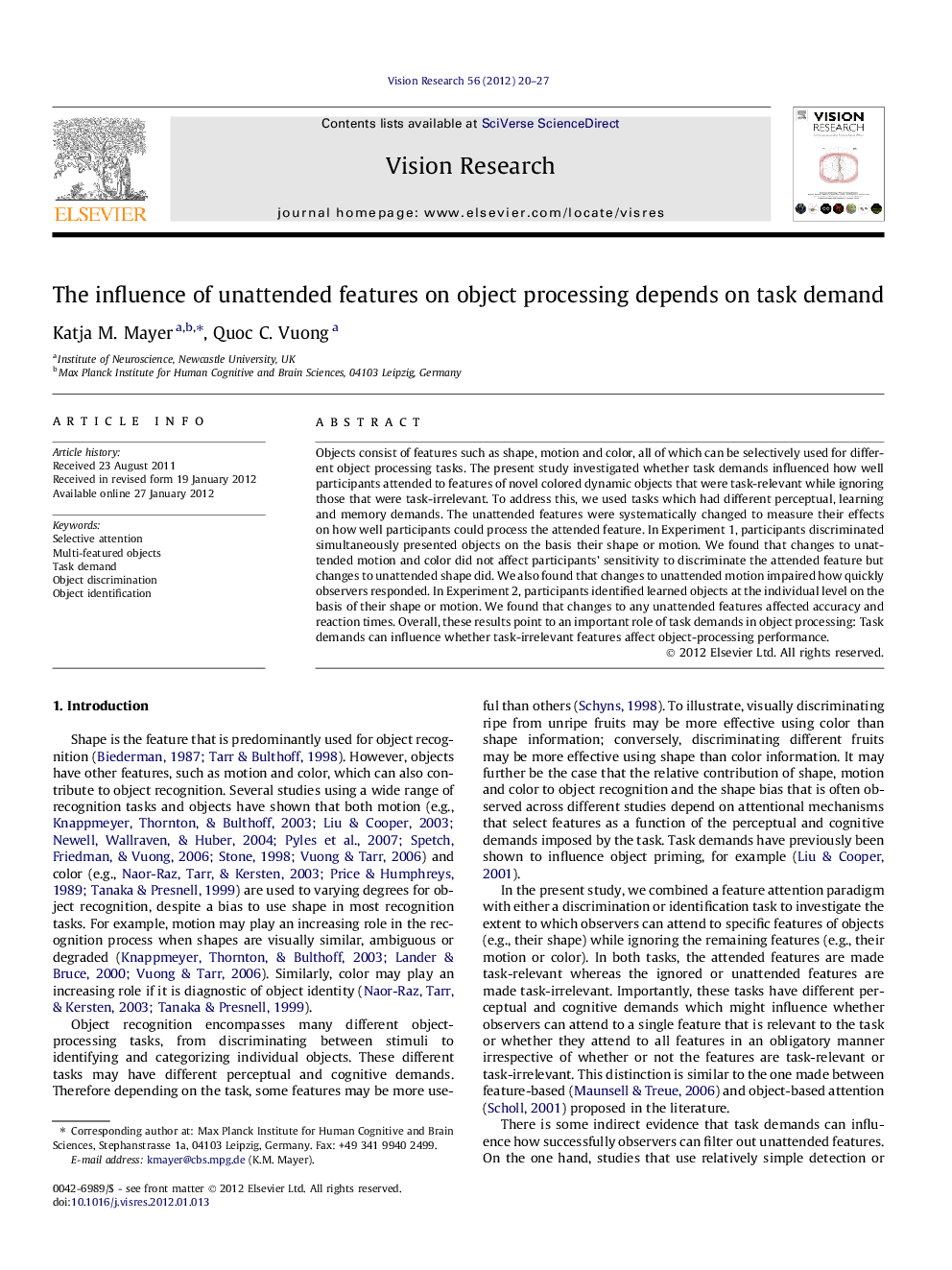| Article ID | Journal | Published Year | Pages | File Type |
|---|---|---|---|---|
| 4034053 | Vision Research | 2012 | 8 Pages |
Objects consist of features such as shape, motion and color, all of which can be selectively used for different object processing tasks. The present study investigated whether task demands influenced how well participants attended to features of novel colored dynamic objects that were task-relevant while ignoring those that were task-irrelevant. To address this, we used tasks which had different perceptual, learning and memory demands. The unattended features were systematically changed to measure their effects on how well participants could process the attended feature. In Experiment 1, participants discriminated simultaneously presented objects on the basis their shape or motion. We found that changes to unattended motion and color did not affect participants’ sensitivity to discriminate the attended feature but changes to unattended shape did. We also found that changes to unattended motion impaired how quickly observers responded. In Experiment 2, participants identified learned objects at the individual level on the basis of their shape or motion. We found that changes to any unattended features affected accuracy and reaction times. Overall, these results point to an important role of task demands in object processing: Task demands can influence whether task-irrelevant features affect object-processing performance.
► Task demand defines the level of implicit association of attended and unattended object features. ► No influence of unattended color on accuracy and reaction times at low task demands. ► Implicit association of attended and unattended object features when learning object identity. ► Implicit association of attended and unattended object features at high task demands (i.e., object identification).
